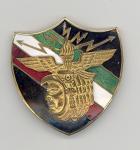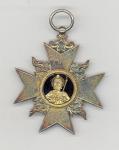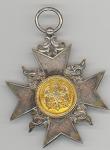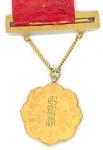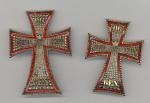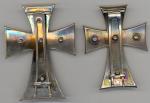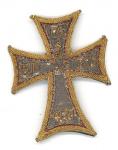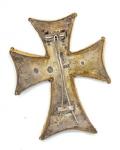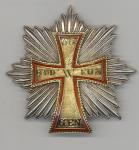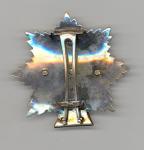
JBFloyd
Moderator-
Posts
1,242 -
Joined
-
Last visited
-
Days Won
2
Content Type
Profiles
Forums
Blogs
Gallery
Events
Store
Everything posted by JBFloyd
-
MM awards to Allies were generally not named. As this medal is a French-made copy, I would not expect it to be named.
-
"At all times" in my case.
-
There was a sequence to the numbering systems on US medals: 1. Plain numbers ("1234") or "No." prefixed numbers ("No.1234") came first. These were issued to men who qualified and were still serving. Most of these are traceable by number to an individual, although the Army had more medals made than they issued, so there were some numbered, but unissued, medals at the high end of the number range. Initially, the Army only awarded campaign medals to men still serving. Those who had been discharged got nothing. 2. "M.No." numbers are US Mint numbers. These indicate medals to individuals who qualified, but were no longer serving when the medal was issued. When the regulations changed to permit ex-soldiers to receive campaign medals, those men had to apply to the Army; their records would be checked to verify eligibility and they would be sent a form to send to the Mint (with a payment) to get their medal. The Army may have maintained a roll of these medals, but it has never been found in the Archives, so they are untraceable. 3. Unnumbered medals were produced under contract to the government for replacements or late issues. Others were produced with government permission for private sale to veterans. For example, a man named George Studley used government-provided dies to strike a number of medals, which he sold at reunions, etc. Official manufacturers are still producing unnumbered medals for the collector market. Until you get experienced in the styles of manufacturing and numbering of US medals, it's best to stay away from the unnumbered medals. The Army was forced to award medals to soldiers who had served and qualified, but were no lnger serving. The Army's position was essentially that these men were not in uniform and had no need for something that would only be properly worn on a uniform. However, the large number of volunteers who served in the Spanish-American War and Philippine Insurrection pressured their Congressmen to require the Army to issue them medals, even though they were back in civilian life. Congress say the power of the veterans' vote and made that happen. The result was a major change in the way medals were given. This is a very, very abbreviated account of the medal numbering system, which reflected major changes in the Army. I would strongly recommend to anyone interested in US medals that they get a copy of "Call of Duty", by John Strandberg and Roger Bender. The text is mediocre, at best, but the photos are of real medals with original numbering. The book has excellent photography, so you can see the numbering styles. I would also recommend an OMSA monograph called "The Gleim Medal Letters", a compilation of research by the foremost expert on Army campaign medals, Col Al Gleim.
-
OMSA convention is 13-16 August 2009, in Grand Rapids, Michigan, not Minneapolis.
-
To Bill's question: if they came out of West Virginia, they are probably fakes. As far as I know, NASA had one batch struck. Then Evans Kerrigan was able to get some more struck based on his book. Now, there is an endless supply coming out of West Virginia (NACA and early NASA DSMs in particular). There are just minor die variations between the originals and later copies. Since I have rarely bothered with NASA material, I don't know the precise details. Also, NASA medals are worn on the uniforms of the military astronauts. I've seen various ideas of precedence and how they should be worn in military uniform.
-
Service Decoration, in bronze, of the NSDAP.
-
Many thanks or mil gracias!
-
It's only in the last decade or so that KGL items have come into their own in the British market (and that seems largely because the Germans have money and the willingness to look across national borders). The KGL fell into a category similar to the Indian Army in that because they were not researchable at Kew, they were beneath the dignity of a "real" collector. Rick's comments on the relative rarity of medals to KGL units are spot on, but it's still the Germans who lead the way in appreciation of that rarity. Americans acquired KGL items because they were generally cheaper than medals to British units, and that was fine for type collectors. The price gap is closing as British collectors get priced out of the market for British unit medals, but I think there will always be some gap.
-
-
Copies of Efler's book are listed on www.addall.com
-
I hadn't checked Feuerwehr awards, but that brings up Efler's "Deutsche Feuerwehr-Ehrenzeichen 1802-jetzt", which shows it as "Duetcher-Feuerwehr Ehrenkreuz, 2. klasse", 1928-1934. So, first class was enameled, second class was not. Thanks for the memory jog.
-
I've seen this somewhere before, but the memory stick in my head has filled up. This one is silver, with gilt and enamel. Unmarked. Any info greatly appreciated.
-
It appears to be the medal of a worker's union in Naples to "associate" Giuseppe Opalka.
-
Can anyone come up with anything on this one? It hung from something else, as there's no pin. The inscription is far beyond my limited skills with kanji. At this stage wild guesses are better than what I know about it.
-
Let me find my Dannebrog wrench!
-
Luftwaffe Help with identification again
JBFloyd replied to Alexandre's topic in Wehrmacht Medals, Decorations & Awards
The badge below his right pocket looks like an Austrian Field Pilot's Badge. -
To finish out the short run of Dannebrog stars and crosses -- two commander's crosses. The larger is marked "AM" and measures 53x70mm. The smaller is unmarked and measures 48x61mm.
-
I've always been a fan of the Dannebrog because of its distinctive and beautiful design, but, in this case, I'm cataloging a collection from a US Army brigadier general who was a collector while posted in Copenhagen in the 1950s. He obviously liked the order as well because he left 3 grand cross breast stars, four commander's crosses, 3 knight first class badges (FVII, CIX and FVIII) and a silver cross (FVII). [This is part of a collection of roughly 400 pieces of worldwide orders, decorations and medals]. Working with Stevnsborg's book and a Danish-English dictionary (and the kind assistance of our forum members), I've learned a fair amount about Dannebrog insignia. That's the fun part of the job.
-
A commander's breast star in tinsel with a silver backplate. With four marks across the back: a 3-towered castle; crowned "AM"; "1888" and initials "GS" or "SG". It measures 70x88mm.
-
No trace of white enamel. The lettering is flat against the background and there is no trace of enameling anywhere, even in the interior of the letters.
-
This one is slightly smaller than most I've seen (63x65mm) and without white enameling in the center cross. Unmarked.



